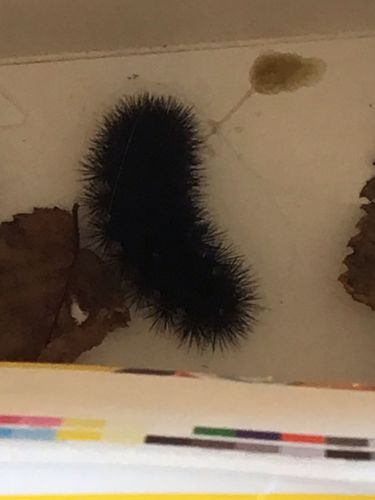Woolly Bear Caterpillar (likely part of the Tiger Moth family)
Scientific Name: Pyrrharctia isabella (or other species within Arctiinae)
Order & Family: Lepidoptera (Moths and Butterflies), Erebidae (Erebid moths), Arctiinae (Tiger Moths)
Size: Larvae (caterpillar) typically 1.5 to 2 inches (3.8 - 5 cm) long.

Natural Habitat
Widely distributed throughout temperate regions, found in woodlands, meadows, gardens, and along roadsides. Often overwinter under leaf litter or logs.
Diet & Feeding
Polyphagous, feeding on a wide variety of low-growing plants and herbaceous vegetation, including dandelions, plantain, clover, sunflowers, and asters.
Behavior Patterns
Woolly bear caterpillars are known for their distinctive bristly appearance. They are often seen in autumn, actively foraging before finding a place to overwinter. During winter, they can freeze solid and thaw out in the spring, showcasing remarkable cryopreservation abilities. They pupate in spring and emerge as adult Isabella Tiger Moths, which are nocturnal.
Risks & Benefits
Generally harmless to humans. Their bristles do not sting, but can cause mild irritation in sensitive individuals if handled extensively. They play a role in the ecosystem as herbivores and as a food source for birds and other predators. The adult moths are pollinators.
Identified on: 11/21/2025